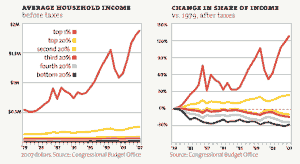Updates:
- Romney attempts to scare Ohio auto workers into thinking Jeep was moving their facilities to China
- Romney Auto Bailout Ad Tells Four Myths In 30 Seconds
As the 2012 election approaches, there will be much talk on both sides regarding the Obama administration’s role in saving the American automotive industry. You don’t have to take the Obama administration’s word for this, The Economist (initially against government help for the auto industry) has since issued an apology. And GM is once again the largest auto maker in the world.







